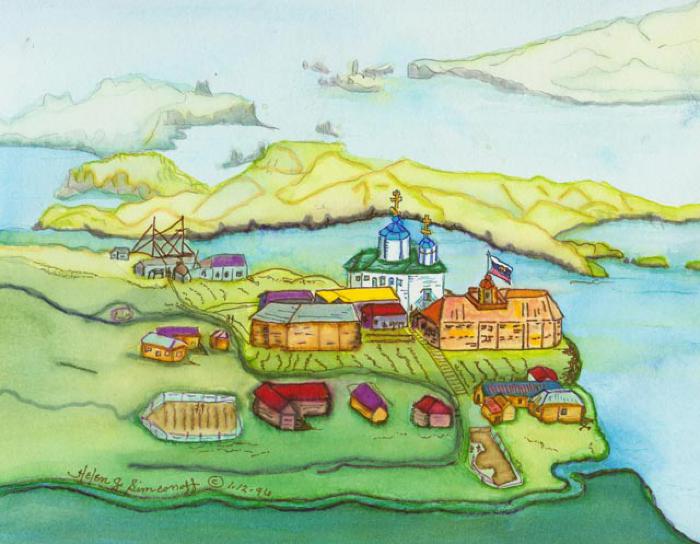Kodiak City — Sun'aq

Established by fur traders in 1793, Kodiak was the second major Russian settlement on Kodiak Island and the first capital of Russian America. It was originally called Pavlovskaia Gavan, Paul’s Harbor, or St. Paul’s Harbor. Although archaeological sites indicate that Alutiiq people lived in the area around the current city for millennia, the historic era Native village, Tangirnaq, was on nearby Woody Island.
Today, many Alutiiq families live in Kodiak because it is the economic center of the archipelago with job opportunities, stores, and other conveniences. However, they maintain strong connections with their ancestral villages, returning seasonally to hunt and fish and on holidays to visit family. In 2010, the city of Kodiak was home to 6,130 people, 594 of them Native. Many of the city’s Alutiiq residents work in the region’s major industries: fishing, logging, and tourism.
Kodiak’s Alutiiq people belong to a variety of Native corporations and tribal councils. Those who have ancestral ties to the Chiniak Bay region are enrolled in either Leisnoi, Inc., or Native of Kodiak, Inc.—regional corporations formed under the Alaska Native Claims Settlement Act of 1971. These corporations are economic entities, designed to administer a portion of the lands and funds returned to Native people by the settlement. In contrast, tribal councils, including the Woody Island Tribal Council and the Sun’aq Tribal Council, tend to the political, social, and cultural affairs of their members.
